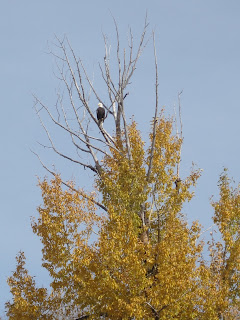November 26, 2010 - By PETER CROWLEY, Enterprise Managing Editor
SARANAC LAKE - Three local biathletes will start a competitive international winter tour next week, but instead of Haley Johnson joining fellow Olympians Tim Burke and Lowell Bailey, it'll be Annelise Cook.
Bailey was picked last weekend as the fifth and final member of the U.S. biathlon World Cup team, joining Burke in Ostersund, Sweden for the World Cup season kick-off Thursday.
Bailey, 29, has called Lake Placid home since he was 10. Burke, 28, grew up 20 miles away in Paul Smiths, where his parents still live, but he bought a house in Lake Placid earlier this year. Both were Winter Olympians in 2006 and 2010, and Burke made history last season by becoming, for a time, the first American ever to wear the yellow bib as overall World Cup points leader. He, fellow Olympian Jeremy Teela and young prospect Leif Nordgren pre-qualified for this season's World Cup team based on last season's results.
On the women's side, Cook, 26, of Saranac Lake, was chosen for the IBU Cup tour, a step down from the World Cup. She was a discretionary pick by the International Competition Committee after some strong results in a three-race trial series last week in Canmore, Alberta.
"The ICC, in selecting Annelise Cook, noted that she showed great improvement over the previous season and had the next highest performance in the trials and was well ahead of the next rank competitor," the U.S. Biathlon Association wrote in a Nov. 19 press release announcing the team picks.
"I'm pretty psyched," Cook said Wednesday, back in her hometown.
Cook had dropped biathlon after missing the cut for the 2006 Winter Olympics, switching to nordic ski racing for the University of Utah. She returned to biathlon last winter, but "things didn't go that well," she said.
"I didn't ski that fast, and I ended up getting cut from the national team in the spring," she said. "But I wanted to give it one more shot."
Over the summer, biathletes and coaches in Lake Placid "were very gracious" in sometimes letting her join team training when she wouldn't be in the way. As a result, she said, her skiing speed has greatly improved, which was her favorite part of the recent trials.
"It made racing really fun, instead of last year when it really stunk," she said. "Last year, I had to rely on my shooting. ... This year, I would say they're more even. I'm a decent shot; I'm pretty consistent, which is a good thing." But being a better skier "takes some of the stress away" when she approaches the firing line.
"I'm super-grateful that people were very inclusive of me over the summer because otherwise there's no chance I would have made it - no chance," Cook said.
Johnson has not yet qualified for either the World Cup or IBU Cup circuit. The 28-year-old from Lake Placid wrote on her blog Saturday, the day after the teams were announced, that she had skied well but shot poorly in last week's trials. But she will have more chances before the final World Championship team is picked in January.
"I'll continue as planned and be ready to race later again in December at a NorAm in Mt. Itasca, MN for the IBU Cup Team Trials," Johnson wrote. "However, in this next month I'll be able to take a closer look at my shooting. I have some ideas of how to fine tune my competition shooting and with the help of my staff, we will re-evaluate the mechanics of my rifle (its a bit like a well-loved old car - 13+ years old? - and could use some new parts)."
Bailey was a discretionary World Cup pick.
"The ICC in selecting Lowell Bailey noted that he had very strong results over the summer/fall and had been sick before the trials so was not at his best for the races," the USBA wrote. "They also noted that he has played a very important role in World Cup Relays and that his experience there will be helpful to the team."
Bailey is back home this week after the trials in Canmore. Burke has been in Ostersund since Nov. 15. Johnson was in Lake Placid earlier this month and visited with fourth- and fifth-grade classes at Lake Placid Elementary School on Nov. 5, talking about how exercise is harder at high elevations. Johnson regularly keeps in touch, visits and skis with LPES students.
Bailey, Burke and Johnson grew up skiing and competing together in the Adirondacks. Cook did, too, albeit a couple of years behind.
World Cup biathlon races start Wednesday for women and Thursday for men in Ostersund. Cook's first IBU Cup race will be Dec. 11 in Martell, Italy.



































 / IBU Inf. Dept. TO/JK
/ IBU Inf. Dept. TO/JK













